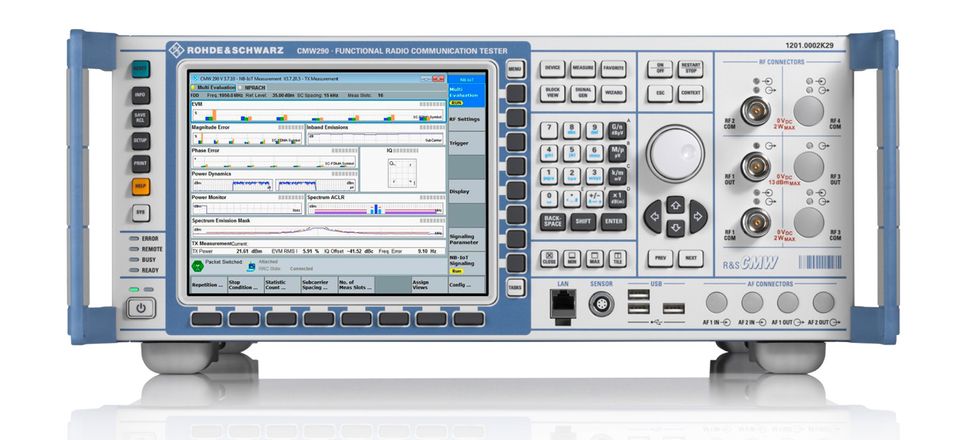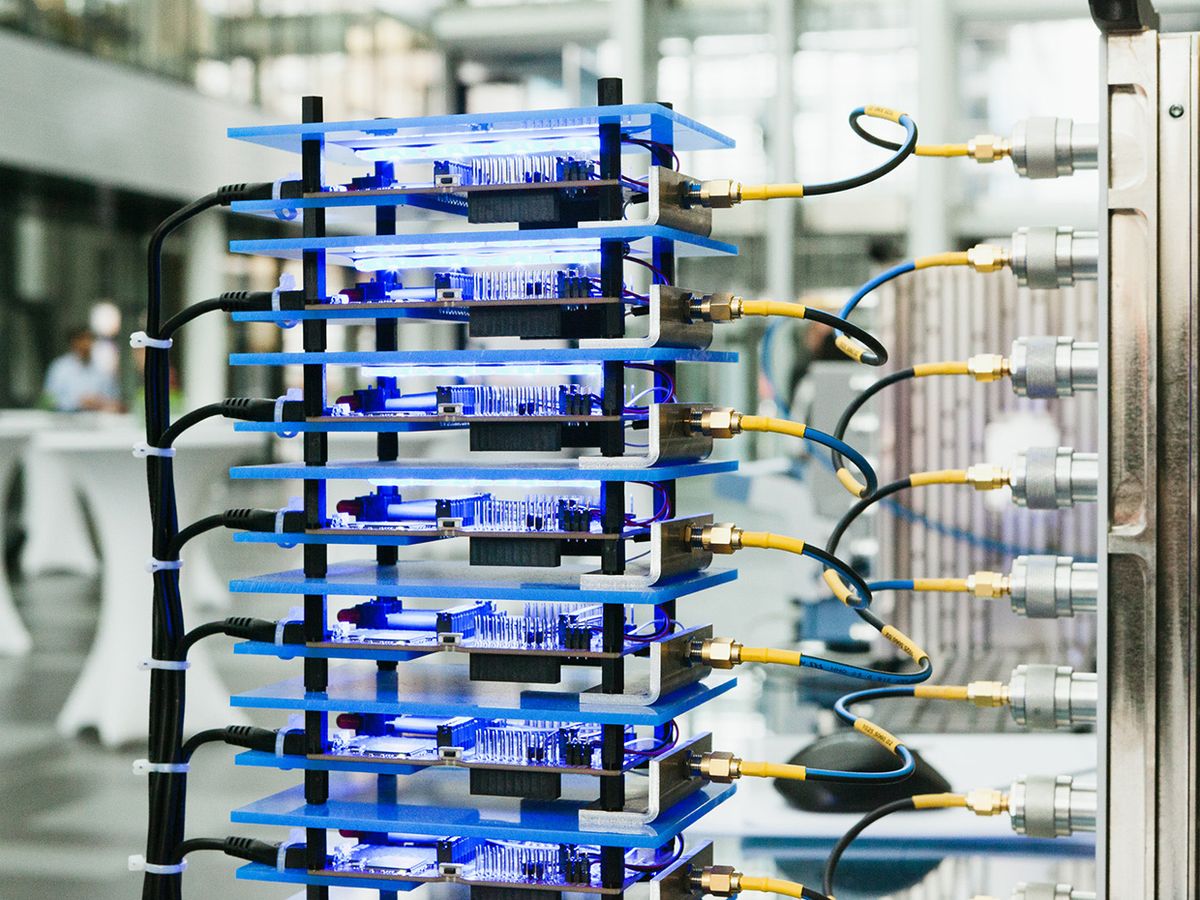Every year at MWC Barcelona, the mobile industry’s largest annual trade show, companies release scores of new connected devices. But before anyone can take these gadgets home, every device must be certified by regulators and industry groups to ensure the underlying technology will work as promised.
For engineers who have worked for months to design a new product, certification is a time when you do not want any surprises. But with so much variety in the Internet of Things (IoT), testing new products in-house can be complicated. Nowadays, devices come in many sizes and shapes, and are designed for very specific purposes. They may have little in common with a laptop or smartphone, and the standard rules of product testing don’t necessarily apply.
Joerg Koepp, Market Segment Manager for IoT at Rohde & Schwarz, helps clients figure out exactly how to test and evaluate new IoT products. He works with startups that want to test their own connected products prior to certification, cities that are trying to figure out which equipment to use for an IoT project, and large companies that want to install sensors to improve the efficiency of their supply chains or manufacturing lines.
Joerg helps each of these clients work through challenges that echo many of the broader issues the wireless industry faces in bringing new technologies to the market. IEEE Spectrum spoke with Joerg ahead of MWC Barcelona about how the rise of IoT has changed the business of wireless testing, and where he sees the most potential.
IEEE Spectrum: If I own a factory or run a transportation department and have a new IoT project in mind, how do I figure out which low-power, wide-area technology to go with? There are so many options—LoRa, NB-IoT, and LTE-M—it seems one could easily make a mistake.
Joerg Koepp: The problem is there’s not one answer. It depends very much on the application and the cost. We help our customers by giving them some ideas about capabilities of the different technologies from a technical point of view.
As an engineer, you typically start with the data rate that you need, and whether you need mobility or not.
For example, if a customer would like to run a tracking process nationwide, then 2G is probably the best technology because it’s cheap and has great coverage today. But if you would like to run this project for the next 10 years, 2G is not the right choice because some operators are switching those networks off.
If you would like to have a mobile application where you have constant connectivity, then you have to go with LTE-M or NB-IoT. If you have very cheap sensor applications where you just want to send out sensor data in a static place, like the water level of something, probably LoRa or Sigfox would work very well.
It also really depends on how you would like to use the network. For example, a LoRa network, I can run completely on my own. I can buy some gateways and run here my private LoRa network, like you do for WiFi, so I don’t need to talk to any operator. If I do LTE-M, I have to ask operators whether they have that service.

Spectrum: Rohde & Schwarz is known for its expertise in test and measurement. The IoT includes many more types of devices in more styles and configurations than were previously available. How does this change the way testing is done?
Koepp: We know very well how to test a base station or a smartphone. But now there are new players, that I’ve spoken to in just the past two days, who would like to integrate Bluetooth in some patches that you put on your skin. So there are completely different form factors.
If you think about testing and the way we’ve tested Bluetooth devices, some of it involved taking a USB cord to the device to test it. This will not work these days. We’re now working on solutions that let you complete testing over the air for Bluetooth, so you can test without ever connecting to the device.
Spectrum: Based on your work with Rohde & Schwarz clients, where are you seeing new interest in the IoT come from right now?
Koepp: Especially together with 5G and ultra-reliable, low-latency networks, there’s a lot of interest in factory automation. In old factories, the lines were very fixed with hard wires. Today, you have to be very flexible and factory lines changes more or less every day. Some of our clients are looking to see how to use wireless technology to connect equipment and machines.
Spectrum: When testing IoT device performance, what are some of the key parameters that you evaluate? Why are these important?
Koepp: Some of these tests that we perform for smartphones are even more important for these kinds of devices. They are very often very tiny devices, and full metal devices, so RF performance and antenna design is very important. If you think about smart meters located in the basement, coverage and RF performance becomes much more important than for smartphones, which are not very often in the basement. Deep coverage and power consumption and latency—this combination is very important.
It’s not about saying, “Now I’m testing RF performance, now power consumption, now latency…”—it’s really about end-to-end testing and seeing that it all fits together. You have to think about, what are the effects of different power consumption on data rates and latency? Testing and looking at all these aspects together becomes more important.
Spectrum: What factors must antenna designers keep in mind when they’re working on IoT products?
Koepp: The challenge is always the same. The problem in the IoT space is product designers normally use wireless modules. These modules look ready-to-use and the vendors also give you the impression of—here’s a blueprint and it works. But very often it won’t work because the construction is different and you have a different housing. The antennas are very often in a special or tiny design, like inside of a smart ring, there’s a Bluetooth antenna.
But the basic parameters are still the same—antenna gain, the influence of the board, the influence of the housing, and all these different parameters that have been well-known for more than 100 years in antenna design are valid for the IoT. And most of these new players have no idea about this.

Spectrum: Wireless devices must often be certified by regulators or standards/industry groups before they are released to customers. What do these certifications typically cover?
Koepp: There’s a couple possibilities. In the sense of regulators, that you’re not destroying the communications from others.
For standard certification by the LoRa alliance or the Bluetooth SIG—they, of course, are looking more for interoperability and that any device can interoperate, and can do so with good performance. Using LoRa as an example, if some LoRa devices were really badly designed, some people might say, LoRa doesn’t work—even if it has nothing to do with the technology, it has to do with the device. So the LoRa alliance wants to make sure that every device that has LoRa is certified and has good performance.
We always recommend not to make the full certification set up in your own lab, but to at least check the basics to save time and money and not have to go back several times a year to the certification process.
Spectrum: How can device makers plan to minimize interference and maximize coverage—especially since both depend to some extent on where the device is eventually placed?
Koepp: It’s difficult to say. What could help is, if you know that you would like to operate your devices in a very specific environment and you’re unsure of how this will work, we have a solution where you can check. You can go out with a network scanner and look in a certain area, to see what is the network coverage, and then emulate it in our test equipment.
Some of our customers have problems in certain environments and they discuss it with operators, whether it’s a problem of the environment or a problem of the coverage or device. Now, we have a solution where you scan the environment itself, and then bring it back to the lab, and you use that in your test setup in the lab. We’re showing this at MWC Barcelona.
Spectrum: What is your most popular testing product? Why do you think that product has done so well?
Koepp: I think our most successful platform is really the CMW. It’s quite attractive because it’s true end-to-end testing, from RF to application testing. The CMW supports the majority of wireless technologies, including cellular technologies, WiFi, and Bluetooth. We can have also a look on the communication behavior e.g. what kind of encryption is being used, what kind of keys are used, so you have a kind of complete picture of what the device is doing in terms of secure communication. All of this stuff you can test together. We’ve also offered a special flavor for production testing. It’s kind of an all-in-one platform that you can use for different purposes, and it’s been very successful.
Spectrum: What are you most excited to see this year at MWC Barcelona?
Koepp: At the end of the day, technology-wise, everything is now on the table. What’s really interesting is—what is the business?
IEEE Spectrum is an award-winning technology magazine and the flagship publication of the IEEE, the world’s largest professional organization devoted to engineering and the applied sciences.
Rohde & Schwarz is one of the world’s leading manufacturers of test and measurement, secure communications, monitoring and network testing, and broadcasting equipment.



